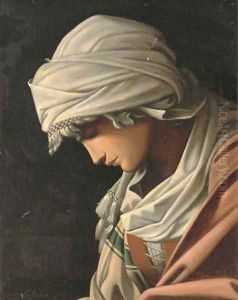Baldassar Schidone Paintings
Baldassare Schidone was an Italian painter of the late Mannerist and early Baroque periods, primarily active in Emilia, particularly in his hometown of Modena and in Parma. Born in Modena around 1560, Schidone's early life is not well-documented, but his artistic training is believed to have begun in the workshop of the Modenese painter Bartolomeo Passerotti, who had a significant influence on his style.
After his initial training, Schidone moved to Parma, where he came under the influence of the works of Correggio and Parmigianino, whose graceful and sophisticated styles were instrumental in Schidone's artistic development. His works are characterized by their soft, rounded forms, a delicate use of color, and a particular attention to atmospheric and lighting effects. Schidone's religious paintings often feature intimate depictions of the Holy Family or the Madonna and Child, imbued with a tender humanism that was well-received by his contemporaries.
Schidone's work found favor with the ruling Farnese family in Parma, which led to commissions that helped to establish his reputation. He also maintained connections with the Gonzaga court in Mantua, another important center for the arts in Italy during the period. Despite his success, Schidone's career was relatively short, and he produced a limited body of work before his premature death in 1616.
Today, Baldassare Schidone's paintings can be found in several major museums, and he is recognized for his contribution to the transition between Mannerism and the emerging Baroque style in Italian painting. His works continue to be studied for their emotive power and their role in the development of 17th-century Italian art.
